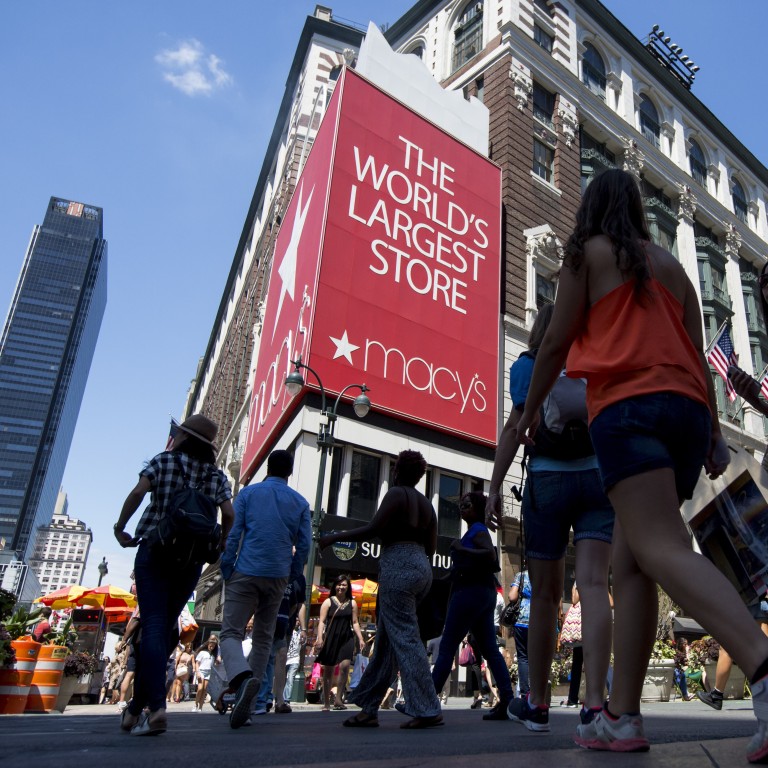Has Donald Trump made America great again? Some (not least the United States president) like to think so, as the world’s biggest economy continues to add jobs at a brisk pace and grow at a fair clip. But this is really a case of fake news. US consumers are borrowing and spending their way to an artificial and unsustainable state of prosperity.
This seems to go largely unnoticed by many economic commentators, and by stock investors who also embrace the
fiction that even a limited US-China
trade deal will soon set the world to rights again. There are none so blind as those who bury their heads in the sand.
More than just
accommodative monetary policy is needed to get (responsible) people to spend, as leading central banks including Bank of Japan and European Central Bank have discovered to their cost, even where interest rates have sunk below zero. You can lead the proverbial horse to water but you cannot easily make him drink.
For that, you need people to have an exaggerated propensity to consume. Such a tendency exists among
US households while in much of Europe, there is a more cautious propensity to save. The data on borrowing and spending tell a more accurate story in this regard than Trump’s claims of an economic renaissance in the US.
Even a cursory glance at trends among the different sectors of advanced and emerging economies reveals the dirty little secret behind the continued “strength” of US economic and employment data. Household debt has reached significantly higher levels in the US than in the euro area, Japan or even globally.
US household debt was just over
74 per cent of gross domestic product in mid-2019, according to figures compiled by the Institute of International Finance in Washington and other sources, including the Bank for International Settlements.
In the euro area, the comparable household borrowing-to-GDP ratio stood at 58 per cent and in Japan at 55 per cent, while the global ratio was just under 60 per cent. In the case of the US, GDP-relative household borrowing slightly outstripped even corporate borrowing and was close to the level (77 per cent) of financial-sector borrowing.
This is not to say that the US president is responsible for the profligate level of household debt in his country because interest rates there (as elsewhere) have been low for long. But he has
publicly opposed any moves or anticipated moves by the US Federal Reserve to raise rates even as it became clear that the US was sinking deeper into debt.
What is the connection between high household debt and the state of the US economy, including the seemingly healthy employment situation there? US personal consumption has remained high despite Trump’s
trade wars and slackening business output, investment and confidence. This has been fuelled partly by the Trump
tax cuts enacted at the end of 2017 but also (as the data reveals) by high levels of personal borrowing.
One irony is that buoyant sales of consumer goods has sucked more imports into the US, despite the tariffs levelled against China and others (and hence the rise in the US external deficit). But as long as it can point to overall economic growth and a rising jobs tally, the White House seems happy to ignore such embarrassing inconsistencies.
What is getting harder to ignore – and which more commentators are remarking upon – is that falling unemployment in the US (at its
lowest in 50 years) is being achieved partly at the expense of diminishing job quality over quantity, not to mention declining wages.
Increasing numbers of jobs created in the world’s “leading” economy are in the services sector rather than manufacturing, and can involve lowly paid employment in anything from fast-food cooking and delivery, to waiting and cleaning. The so-called
gig economy, too, means more short-term rather than long-term employment.
As long as household borrowing goes on in the US, so, too, presumably, can the music of economic growth and employment. But there has to come a point where the ability to repay debt, even at low interest rates, begins to outstrip growth in the economy, especially where growth itself is predicated upon rising debt.
It just is not fashionable any more, it seems, to worry about rising debt, whether in the household, corporate or government sector (where
modern monetary theory has supposedly made even the concept of debt obsolete). But if borrowers no longer care about debt, lenders should and so should governments that will need to bail them out once the music does stop.
Anthony Rowley is a veteran journalist specialising in Asian economic and financial affairs


